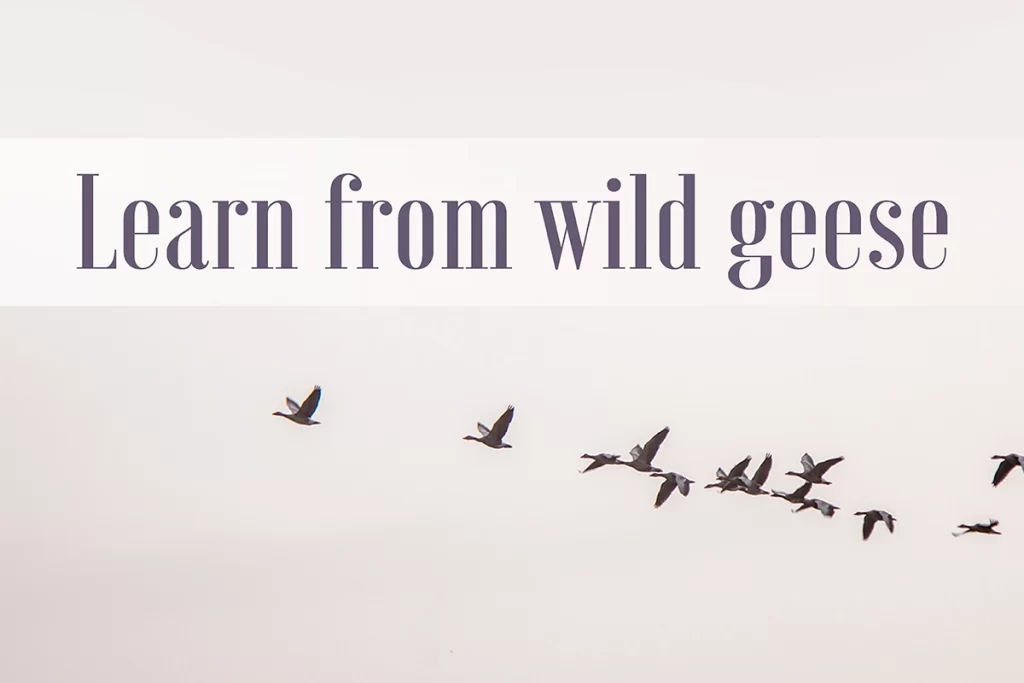A flock of geese flies in the winter sky in the form of the letter ‘V.’ They came from far away Siberia to have a good winter. I didn’t think too much of them, just one group of common migratory birds at this time of year. But it is said that geese fly in the ‘V’ for a reason. When they flap their wings from the front to the back, to each other, they are reducing the resistance of the air, helping the rear geese fly easily. The question is, ‘Who will take the lead in this tough and dangerous V?’ Because the leading geese have to fly through the rough crosswinds, they consume the most energy, they’re more likely to be sick and they’re more likely to be exposed to natural hazards. Surprisingly, wild geese are not led by one strong goose, but their entire team takes turn in the lead. When the first one is tired, it retreats back and the next one comes forward to become the leader. The geese that follow behind have alternate ‘honking’ orders to cheer the goose in the lead. It gives not only himself, but other geese belief; the belief that they can fly far together. In some cases, other geese come near and peck at or scold them when they get out of hand. In addition, during long flights, there are geese that get sick. Then, two or three family members or colleagues leave together to take care of the sick goose. Then, when he recovers his health, they move back together. They share their pain and stay together until the end. We always learn something from nature, but I think there are so many things to learn from wild geese: the role and attitude of the leader, the spirit of communication and cooperation, and love and consideration.
